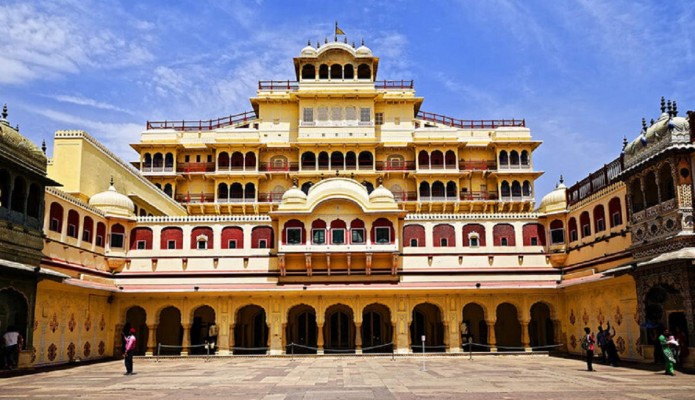City Palace Jaipur

City Palace was established at the same time when city Jaipur established. It was the space for religious and cultural events. The palace consists offices of the Museum Trust, several buildings, courtyards, restaurants and galleries. Jaipur city and the city palace has inter-related history. It started with Maharaja Sawai Jai Singh who ruled from 1699 to 1744. In the beginning, he ruled from his capital at Amber, which is at a distance of 11 kilometres (6.8 mi) from Jaipur. But, in 1727 he shifted his capital from Amber to Jaipur because there was an increase in the number of population and there was water shortage.
Information to Know:
- Entry fee :
For Indians - INR 130, For Children – INR70, For Senior citizens – INR110
For Foreigners - INR 500
- Photography Cost – INR50
- Videography Cost – INR150
- Opens all days of the week from 9:30am to 5:00pm
Architecture:
This palace is famous for Mubarak Mahal, Shri Govind Dev Temple Chandra Mahal and the City Palace Museum. There are three main entry gates. The royal family uses the Tripolia gate to enterinto the palace and common people and visitors can only use the Udai Pol and the Virendra Polto enter the complex. The main complex has a temple, guest house and royal courtrooms.
What to do in City Palace:
- Photography
- Sightseeing
- Galleries
- Shopping from local shopkeepers
How to reach:
Jaipurbus stand is the nearest bus terminal.
Udaipur cityRailway Station is the railway station nearby city palace.
Sardar Vallabhbhai Patel International Airportis the nearest airport to this location.
Places to visit in City Palace:
Chandra Mahal – It is a seven storey palace and some parts are still under royal family. There is a flag that flies at the top of it and for tourists only ground floor is open.
Pritam Niwas Chowk – There are four gates representing the gods and four seasons with different themes. Gate at the northeast is called Peacock gate which represents autumn season and Lord Vishnu. Lotus gate at the southeast represents summer season and is dedicated to Lord Shiva. The third gate in Northwest is green in colour and called Leheriya, it represents spring and is dedicated to Lord Ganesha.Southwest rose gate represents winter season and is dedicated to Goddess Devi.
Sabha Niwas (Diwan-e-Am) –It is a public audience. It has beautifully painted plaster ceiling.
Sarvato Bhadra (Diwan-e-Khas) – It is a single-storeyed square, open hall, with enclosed rooms at the four corners. It is used for celebrating festivals like Diwali, Dusshera etc.
